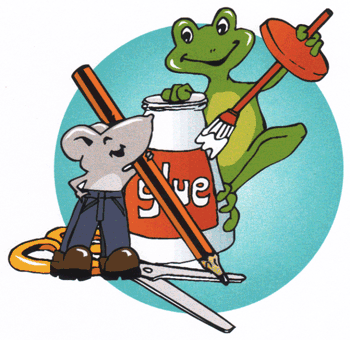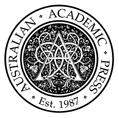Eleven experienced
teachers and teacher aides from the Brisbane area were invited to participate
in a four to eight week trial program of the program in two forms – the full program and a reduced quicker
version. The trial was not intended to be a clinical trial of improvements
noted in student’s fine motor skills, as benefits from practicing
fine motor and other related skills have been reported elsewhere in the
manuals. Rather, the purpose of the trials was to receive feedback on
the perceived value and feasibility of the program and any additions
or changes to make it easier and more appealing to both children and
teachers..
Sixty-four percent
of the teachers/aides in the trial program reported having 16 or more
years of classroom experience, and 36% reported having 11-15 years
of classroom experience. This group represented teachers/aides from
Preschool, Year 1, Year 3, and Special Needs classrooms. The average
classroom size contained 25.3 students. Along with typically developing
children, teachers/aides reported that children with autism spectrum
disorders (ASD), intellectual impairment (II), developmental disabilities
(DD), Speech/Language disorders, learning disabilities (LD), attention
deficit (hyperactivity) disorder (ADD/ADHD), English as a second language
(ESL) and unspecified special needs were also enrolled in their classrooms.Teachers/aides
also indicated that collectively, 3% of the children in their classroom
received occupational therapy services.
Every teacher/aide
reported positive and enthusiastic comments about the programs, and
all indicated that they would, budget permitting, purchase the programs
and would unequivocally recommend it to other teachers/educators. Some
of the comments about the program included statements such as, "They
[children] loved it- looking forward to every Tuesday afternoon. I would
love to incorporate this into our routine next year!" Others said, "Saw
improvements in a short time", "Good routine for II /special
needs students" and, "children enjoyed the activities and it
put a focus on writing". Another indicated, "It is an
effective, positive program that shows children that we all improve with
practice. That is important to learn!"
Children participating
in the trial programs were reported to have, "Loved
it! Asked when next session was, laughed during activities, and saw it
as a “fun” activity not a learning activity." Another
teacher indicated, "Children loved it, very much so" and another
said that the children in her classroom, "Asked to keep doing the
program after we had finished".
Seventy-three percent of the teachers/aides reported that the introductory,
theory based chapters were helpful, and that organizing the activities
by categories was also a positive feature of the program.
For those teachers
who reported setting goals for the participants, Strong Hands Activities,
found in the Strengthening Activities section, Touch and Tell Activities-
Arm, Finger, and Hand Awareness found in the Sensory Activities section,
Hands at Work- Fine Motor Planning from the Fine Motor Coordination
Activities section, Let’s
Doodle- Pre-writing and Pencil Control Skills in the Pencil To Paper
Activities section, and Cutting Skills activities were the most important
in terms of goal setting. While all activities categories were selected
in terms of their worth and importance, the Fine Motor Coordination
activities were frequently selected by teachers/aides (28%) as being
the most useful in their classrooms.
Of the five teachers/aides
who commented on the level of explanation provided for the activities,
all indicated they were clearly explained, while seven who commented
also indicated that suggestions for how to grade activities was helpful.
One teacher indicated, "Especially
useful when I tried activities with whole class- because everybody wanted
to do Fingergym!"
Seven teachers/aides responded to questions reflecting on, based on
activities provided in the manual, their ability to develop their own
activities, the worth and quality of the supplies lists, and the explanation
for the set up of Fingergym. All indicated that they were pleased
with the information provided in the manual. In terms of developing new
activities, one teacher/aide responded by saying, "I have done a
few which seemed to work quite well." When asked, from the explanations
provided in the manual, do you feel that you could set up a similar program,
one teacher responded by saying, "using such a great program I could."
Overwhelmingly, teachers/aides
shared with us that both they and the children "loved" the Fingergyngle CD,
saying such things as, "Fantastic- we loved it!" and "Children loved
it!" Of the seven teachers/aides participating in the Fingergym trials,
86% reported using the 3 minute track, and 14% the 5 minute track. All
reported that children were attentive during the silences, and while
it was most difficult for preschoolers, they were able to clean up and
move on to the next station, as the music directed them to.
Although several teachers/aides reported that a 4-week trial was not
long enough to see clear improvements in fine motor as well as behavior
function, these teachers/aides still felt the program was good, and results
would be noted in a longer time period. Of those reporting improvement,
the most significant were in Fine Motor Coordination and Pre-writing
and Pencil Control skills. In the behavioural domain, improvement in
self-confidence, independence and initiative were observed in children
participating in the program
When asked what teachers/aides
liked best about the program, most responded that the CD was the feature
they most liked. Other comments included, "tasks
were well categorized, "children’s eagerness to participate," "book
well set out and helpful," and "it is a positive program that
identifies problems that some children have and sets out how to solve
them in a happy and respectful way," Finally, "The children
have enjoyed the program. As a teacher aide the structure was excellent.
I always felt I knew exactly what I was doing. "
A final comment a teacher shared about the program was, "Congratulations!
The program is sensational. I would like to be able to start the year
with this program."
Frequently Asked QuestionS
- Is
Fingergym™ suitable for the older children as well
as the Year 1 and 2s?
Although designed
with the needs of students up to age 8, by incorporating more academic
based activities into the program, Fingergym™ can
easily and successfully be adapted for older students. Using the
rotations format as a base; especially the 5 minute CD track, is
an ideal way to incorporate Fingergym™ into
an older children’s classroom. For some older students
who still struggle with focusing on tasks, getting started on writing
tasks, or completing a task independently, Fingergym™ can
be very motivating.
Here are some Fingergym™ extension ideas for older children:
- Practise copying skills from a whiteboard or blackboard
- Adjective, noun, verb, etc. identification and treasure hunt using chopsticks
or clothespegs (Children identify word cards with designated parts of speech
and retrieve and place them in a container using chopsticks or pegs)
- Orally brainstorrm ideas for a story and then write up an outline
- Follow written instructions to complete a simple art task such as origami
- Set up a series of upper extremity strengthening exercises such as push
ups, crab walks, and wall push ups
- Help prepare some of
the Fingergym™ worksheets
for younger children such as tracing over the outline for mazes or cutting
activities.
- Set up a series of simple math worksheets that are to be completed in 5
minutes
- Is Fingergym™ suitable
to be used in a single lesson of about 45 minutes once a week?
Optimally it is better to have more frequent sessions. Using the
music CD, Fingergym™ can
be run as either a 16 minute complete running time session or a 25 minute running
time session. Note: add in time for setting up.
A single session is fine, if that is all time permits in your classroom, but
you might not see the results that a regular program would facilitate.
- Having purchased Fingergym™ would
I need to buy other resources in order to successfully run the program?
One of the benefits
of this program is that we have developed many activities that call for
easily accessible, everyday materials that most teachers have right at
their fingertips. However, for initial set up and organizational purposes
we suggest purchasing several large plastic storage containers for all of the
bits and pieces that you are likely to acquire as you implement the Fingergym™ program
in your classroom.
We have also included extensive supplies lists which can be posted on your classroom
door. Parents might be able to provide you with some supplies that they have
at home.
If your budget is tight we suggest that you go through the supplies list and
determine which items you already have. Based on this list, select and implement
the Fingergym™ activities that call for the materials that you have!
- Does Fingergym™ have
any provision for home practise sheets?
We have not specifically included home practise sheets. However the
Data CD does contain printable cutting and drawing activities
that children can take home.
Another suggestion would be to run a Fingergym™ parent information session
to demonstrate some of the program’s activities for home “practise,” such
as using chopsticks or the pegging activities.
Consider preparing a send home a list of the activities (and supplies needed)
done on Fingergym™ day(s) for potential home practice.



